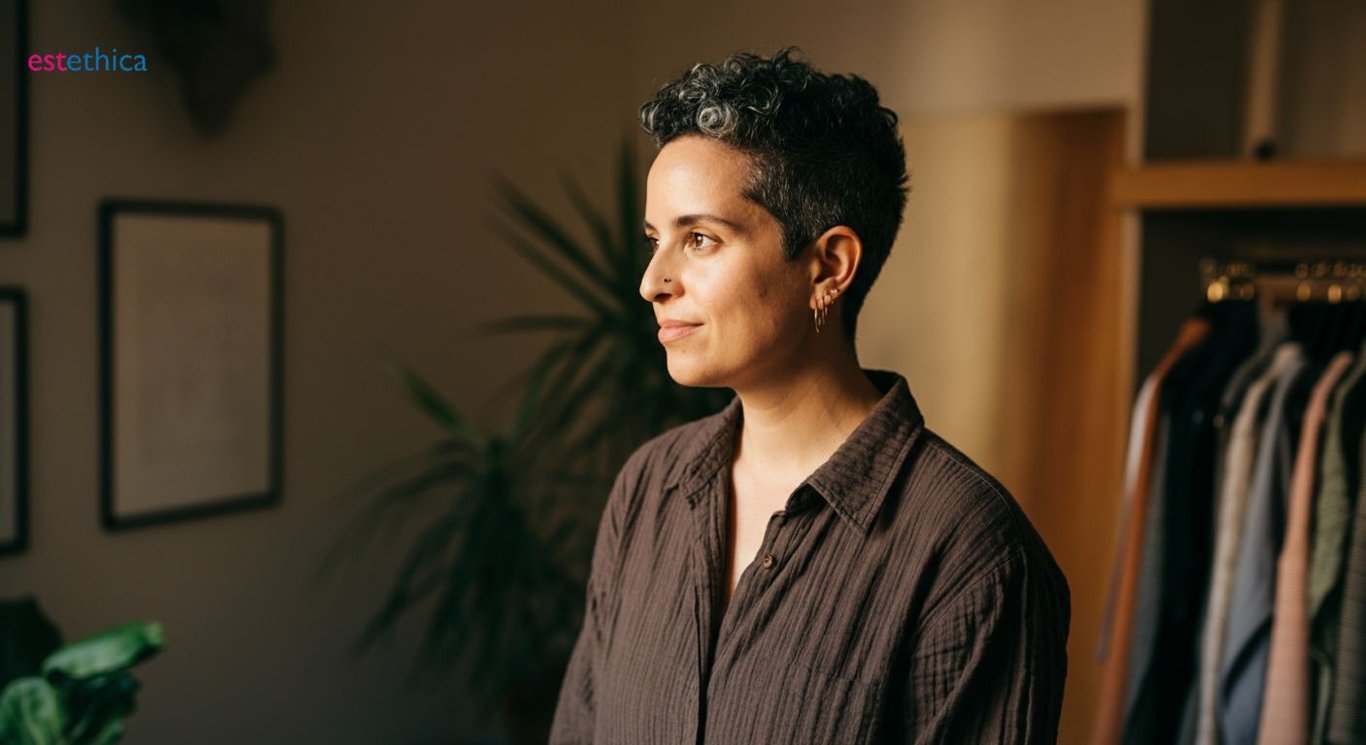estethica Unveiled: Embrace Sustainable Fashion
Discover the future of fashion with estethica—embrace sustainable, eco-friendly clothing choices and support ethical fashion brands.
The concept of sustainable fashion is rapidly gaining traction in today's world, where eco-conscious consumers are becoming more aware of the environmental impact of their choices. estethica represents a significant shift towards practices that prioritize sustainability, ethical sourcing, and conscious consumerism. This article delves into the essence of sustainable fashion, highlighting the rise of green fashion, the identification of ethical fashion brands, affordable eco-friendly clothing options, and reasons for integrating sustainable apparel into your wardrobe.
Understanding the Rise of Green Fashion
The Evolution of Sustainable Fashion
Sustainable fashion, also known as green fashion, is transforming the industry by prioritizing eco-friendly practices. This shift is driven by consumer demand for transparency and the adoption of zero-waste lifestyles. The fashion industry, notorious for its environmental impact, is now embracing renewable materials and sustainable business models. For instance, brands are increasingly using organic cotton and recycled polyester, reducing the carbon footprint significantly. Additionally, companies like Patagonia and Stella McCartney are leading the way by integrating ethical practices into their operations.
Key Elements of Green Fashion
- Use of renewable materials such as organic cotton and bamboo.
- Implementation of eco-friendly production methods, like waterless dyeing.
- Adoption of sustainable business models focusing on longevity and recycling.
These elements not only reduce environmental impact but also promote a circular economy. The rise of ethical fashion brands highlights the industry's commitment to sustainability, offering consumers more choices in eco-friendly clothing.
Steps to Identify Sustainable Fashion Brands
- Research brands' sustainability practices and certifications.
- Check for transparency in sourcing and manufacturing processes.
- Look for brands that prioritize ethical labor practices and fair trade.
By following these steps, consumers can make informed decisions and support brands that align with their values. The movement towards sustainable fashion is not just a trend but a necessary evolution in response to the environmental challenges posed by traditional fashion practices.
For more insights on sustainable practices, you can explore estethica's Insight.

How to Identify Ethical Fashion Brands
Recognizing Authentic Sustainable Fashion
Identifying genuine sustainable fashion brands requires a keen eye for authenticity. Brands that are truly committed to sustainability often provide detailed information about their supply chains. For instance, they might disclose the origins of their materials and the conditions in which their products are made. This transparency is crucial for consumers who wish to support ethical practices.
Moreover, ethical fashion brands frequently hold certifications such as Fair Trade or Global Organic Textile Standard (GOTS). These certifications indicate that the brand adheres to specific environmental and social standards. For example, a brand with a Fair Trade certification ensures fair wages and safe working conditions for its workers, aligning with ethical labor practices.
Key Indicators of Ethical Fashion Brands
- Transparency in supply chain and manufacturing processes.
- Certifications like Fair Trade and GOTS.
- Commitment to using organic or recycled materials.
These indicators help consumers make informed choices, supporting brands that genuinely prioritize sustainability and ethical practices.
Steps to Support Ethical Fashion
- Research brands' sustainability goals and achievements.
- Verify certifications and ethical commitments.
- Choose brands that engage in corporate social responsibility.
By following these steps, consumers can contribute to a more sustainable fashion industry, encouraging brands to maintain high ethical standards.

Exploring Affordable Eco-Friendly Clothing Options
Breaking the Myth of Expensive Sustainable Fashion
The perception that sustainable fashion is costly is gradually changing. Many brands now offer eco-friendly clothing at accessible prices. For instance, thrifting has become a popular way to find unique, sustainable pieces without spending a fortune. Additionally, clothing swaps provide an opportunity to refresh wardrobes sustainably. Online platforms dedicated to sustainable fashion also offer a variety of affordable options, making it easier for consumers to embrace eco-friendly clothing without financial strain.
Affordable Sustainable Fashion Strategies
- Explore thrift stores for unique, sustainable finds.
- Participate in clothing swaps to refresh your wardrobe.
- Shop from brands with transparent pricing and eco-friendly practices.
These strategies not only help in finding affordable options but also promote a circular fashion economy. By choosing durable and timeless pieces, consumers can invest in clothing that offers long-term value.
Steps to Discover Budget-Friendly Eco-Friendly Brands
- Research online platforms specializing in sustainable fashion.
- Look for brands with clear sustainability commitments and transparent pricing.
- Engage with communities focused on eco-friendly clothing swaps and thrifting.
By following these steps, consumers can find affordable ethical fashion options that align with their values. This approach not only supports sustainable apparel but also encourages a shift towards more responsible consumption patterns.

Why Choose Sustainable Apparel for Your Wardrobe
The Benefits of Eco-Friendly Clothing for Personal Well-Being
Choosing sustainable apparel offers numerous benefits beyond environmental impact. Eco-friendly clothing is often free from harmful chemicals, making it safer for the skin. For example, organic cotton is grown without pesticides, reducing the risk of skin irritation. Additionally, sustainable fabrics like bamboo and hemp are naturally hypoallergenic, promoting healthier living. By opting for sustainable fashion, individuals can enhance their personal well-being while supporting ethical practices.
Key Advantages of Sustainable Apparel
- Reduced exposure to toxic chemicals, ensuring safer skin contact.
- Support for ethical labor practices, promoting fair wages and safe working conditions.
- Contribution to environmental conservation by reducing carbon footprint.
These advantages highlight the importance of integrating sustainable apparel into one's wardrobe, aligning with the principles of conscious consumerism.
Steps to Embrace Sustainable Fashion
- Research and identify brands committed to eco-friendly practices.
- Choose clothing made from sustainable materials like organic cotton and recycled polyester.
- Support local and ethical fashion brands to encourage market shifts.
By following these steps, individuals can make informed choices that reflect their values, contributing to a healthier planet and personal lifestyle. Sustainable apparel not only enhances aesthetic beauty but also supports the broader movement towards ethical and eco-friendly living.
Integrating Sustainable Fashion in Daily Life
Practical Steps to Embrace Eco-Friendly Clothing
Incorporating sustainable fashion into daily life can start with small, achievable steps. Begin by assessing your current wardrobe and identifying what truly brings value to your lifestyle. Opt for quality over quantity by investing in versatile, durable pieces. Support local artisans and brands committed to sustainable practices. Use platforms that facilitate clothing swaps or second-hand purchases. Additionally, educate yourself about sustainable materials and the life cycle of fashion products to make informed decisions.
Simple Ways to Transition to Sustainable Fashion
- Start with a wardrobe audit to identify essential items.
- Invest in high-quality, timeless pieces that last longer.
- Engage with local artisans and support ethical fashion brands.
These steps not only help in reducing waste but also promote a more conscious approach to fashion. By choosing sustainable apparel, individuals can contribute to a healthier planet while enhancing their personal style.
Steps to Make Informed Fashion Choices
- Research sustainable materials and their benefits.
- Learn about the environmental impact of different fashion products.
- Participate in clothing swaps or buy second-hand to reduce consumption.
By following these steps, individuals can make informed choices that align with their values, supporting a more sustainable fashion industry. This approach not only enhances aesthetic beauty but also aligns with the principles of ethical living.
The Future of Sustainable Fashion
Innovations in Eco-Friendly Materials and Processes
The future of sustainable fashion is being shaped by groundbreaking innovations in eco-friendly materials and processes. For instance, the development of biodegradable textiles such as mushroom leather and algae-based fabrics is revolutionizing the industry. These materials not only reduce environmental impact but also offer unique aesthetic beauty, akin to the lux aesthetics of high fashion. Additionally, advancements in digital technology are enabling more efficient tracking of clothing life cycles, promoting a circular fashion model. This integration of technology and sustainable practices is paving the way for a more ethical and environmentally conscious fashion industry.
Emerging Trends in Sustainable Fashion
- Increased use of biodegradable textiles like mushroom leather and algae-based fabrics.
- Adoption of intelligent manufacturing techniques to minimize waste.
- Integration of digital technology for tracking sustainability efforts.
These trends highlight the industry's commitment to reducing its environmental footprint while enhancing the aesthetic arts of fashion. As consumers, embracing these innovations can lead to a more sustainable and stylish future.
Steps to Embrace Future Sustainable Fashion Trends
- Stay informed about new eco-friendly materials and their benefits.
- Support brands that invest in tech-driven sustainable practices.
- Engage with platforms that promote circular fashion models.
By following these steps, consumers can actively participate in the evolution of sustainable fashion, supporting a future where ethical clothing is the norm. This approach not only aligns with the principles of ethical living but also enhances personal style with innovative, eco-friendly choices.
Innovative Eco-Friendly Fashion Practices
Embracing Sustainable Fashion for a Better Future
Frequently Asked Questions
What is sustainable fashion and why is it important?
How can I identify ethical fashion brands?
Are there affordable options for eco-friendly clothing?
What are the benefits of choosing eco-friendly clothing?
How can I integrate sustainable fashion into my daily life?
Discover the path to 'Healthy Beauty' with estethica's expert care. Call now for your free consultation and take the first step towards a more confident you!
📞 Call for Your Free Consultation